Free Surface Flow Training Package, 10 Practical Exercises
Original price was: $1,060.00.$118.00Current price is: $118.00. Student Discount
This CFD training package is prepared for BEGINNER, INTERMEDIATE, and ADVANCED users of ANSYS Fluent software in the FREE SURFACE FLOW area, including 10 practical exercises.
Click on Add To Cart and obtain the Geometry file, Mesh file, and a Comprehensive ANSYS Fluent Training Video.To Order Your Project or benefit from a CFD consultation, contact our experts via email ([email protected]), online support tab, or WhatsApp at +44 7443 197273.
There are some Free Products to check our service quality.
If you want the training video in another language instead of English, ask it via [email protected] after you buy the product.
Description
Free Surface Flow CFD Simulation Package, ANSYS Fluent Training
This CFD training package is prepared for BEGINNER, INTERMEDIATE, and ADVANCED users of ANSYS Fluent software in the FREE SURFACE FLOW area, including 10 practical exercises. You will learn and obtain comprehensive training on how to simulate projects. The achieved knowledge will enable you to choose the most appropriate modeling approaches and methods for applications and CFD simulations.
Free Surface Flow occurs in many applications. some of these cases are investigated in this training package.
Spillway & Weir
One of the main applications of Free Surface low is in Spillways. Spillways are structures used to pass excess water and floods from the top to the bottom of the dam.
In project 1, the two-phase flow of water and air flowing over a 2-D ogee spillway by an Unsteady solver is simulated. The water will enter the computational domain with a mass flow rate of 60 tons/s and it flows over the spillway. The standard k-epsilon model is exploited to solve fluid flow equations and the VOF multiphase model is used to investigate the motion and interaction of the existing phases.
Problem 2 simulates the flow of water through a 3-D spillway by a Transient solver. Since the modeled fluids are water and air, the two-phase flow model is used. To define the two-phase flow in this simulation, a two-phase VOF (volume of fluid) model is used; So its primary phase is air and its second phase is water.
Problem 3 is an ogee spillway CFD simulation. The purpose of the present study is to investigate the behavior of water flow after passing through an ogee spillway in the presence of airflow. The main task of this type of structure (spillway) is to remove excess water in situations such as floods that water flow damages the dam body.
In analysis 4, the flow inside a Wide-Edge Spillway with Lateral Slope is investigated. It should be pointed out that there is an elevation difference between the main and sub-channel for reasons like storing a portion of flowing water. The RNG k-epsilon model is used for solving turbulent flow equations.
In project 5, the three-phase flow of water, air, and sand flowing over a Circular WEIR are simulated. The water will enter the computational domain with a velocity of 1m/s and it flows over the sand bed behind the weir. The water flow will lift some of the sand and carry it as it flows over the weir.
Canal (Free Surface)
Problem 6 simulates a counterflow in a canal. The purpose of this work is to investigate the type of fluid flow behavior when exposed to a flow in the opposite direction. In this simulation, water flows from the canal into a rectangular section horizontally, and at the same time another flow of water from a pipe lying on the floor of the same canal, horizontally but in the opposite direction of the initial flow into the canal.
Dam (Free Surface)
Numerical simulation of lifting dam has been performed in project 7. The VOF model is used to simulate two fluid phases, and the purpose of this project is to investigate the changes in the FREE SURFACE of the fluid over time. Two models are reviewed in this project. In the first model, the flow continues its path after crossing the dam, but in the second model, it encounters an obstacle.
Open Channel Flow
An open channel is a waterway channel, or artificial waterways, for water conveyance, or to service water transport vehicles.
In analysis 8, the two-phase flow of water and air inside an Open Channel is investigated. The standard k-omega model is used for solving turbulent flow equations. Also, a multi-phase VOF model with the use of an OPEN CHANNEL setting is activated to simulate two phases of water and air inside the channel.
Problem 9 simulates two-phase flow (water and air) inside an open channel with a 180-Degree Bend. To simulate the mentioned two-phase flow, the multiphase VOF model (Volume of Fluid) has been used; Because this two-phase flow is considered FREE SURFACE currents.
River
Finally, in project 10, a Numerical simulation of River Pollution has been done. The VOF model is used to simulate the phases. Pollutant enters the river from a nonuniform profile somewhere in the middle of the stagnant river, and it diffuses into the water.
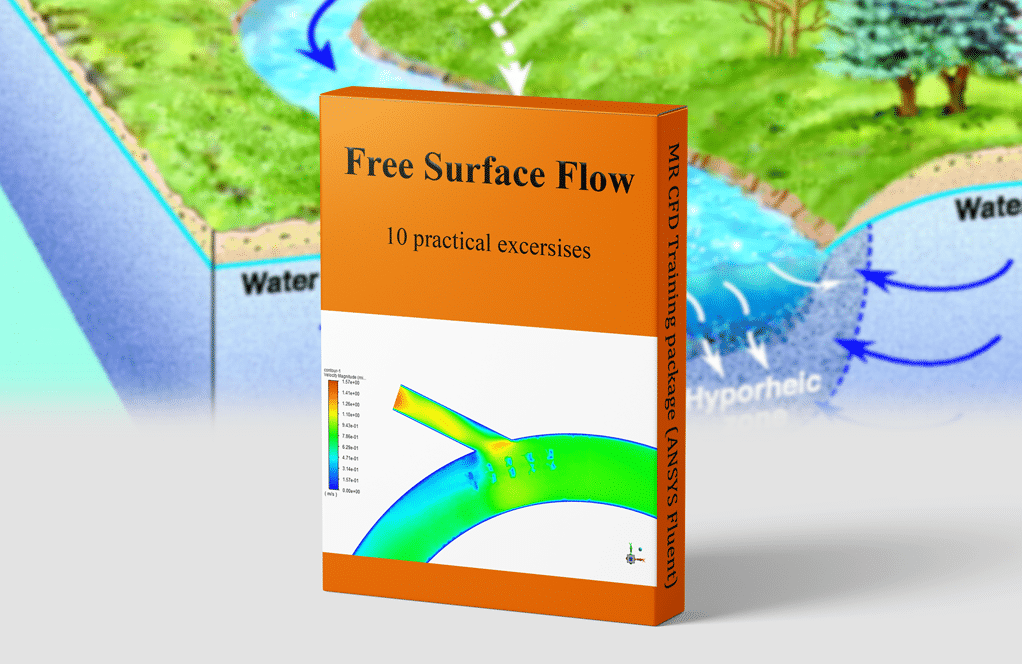
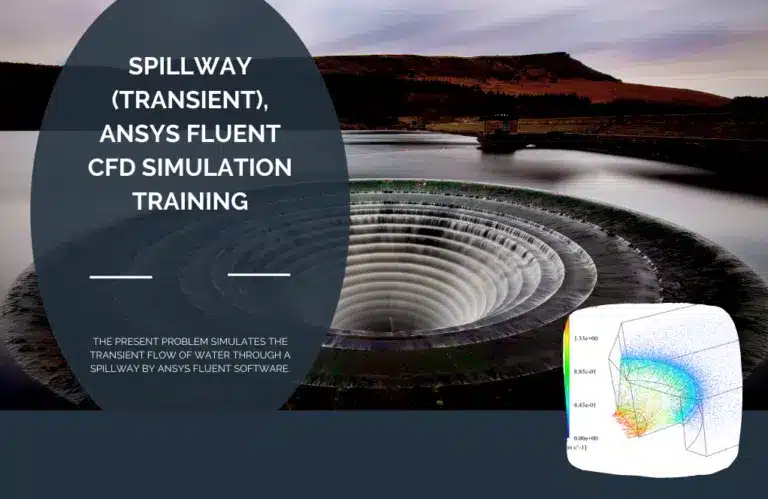
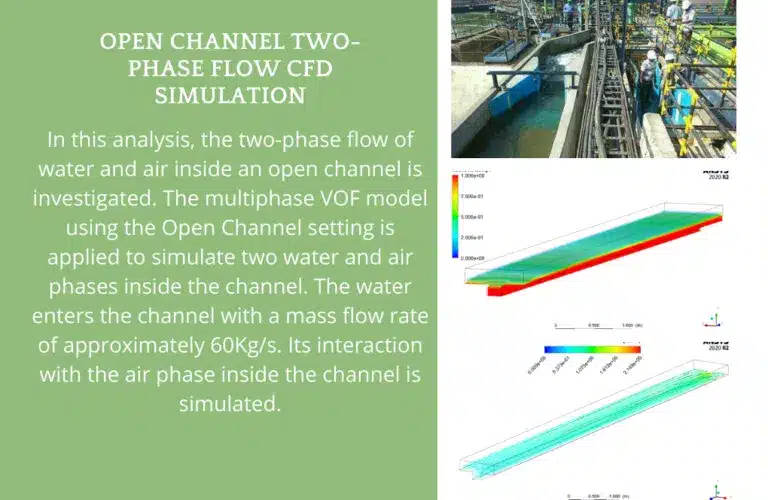
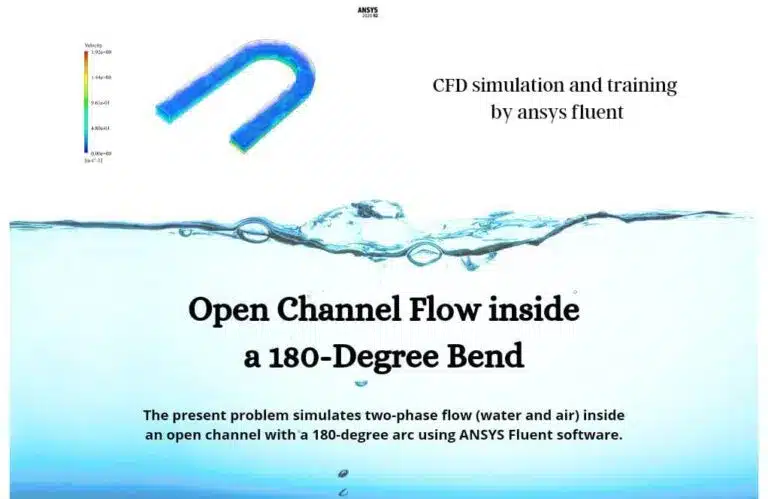
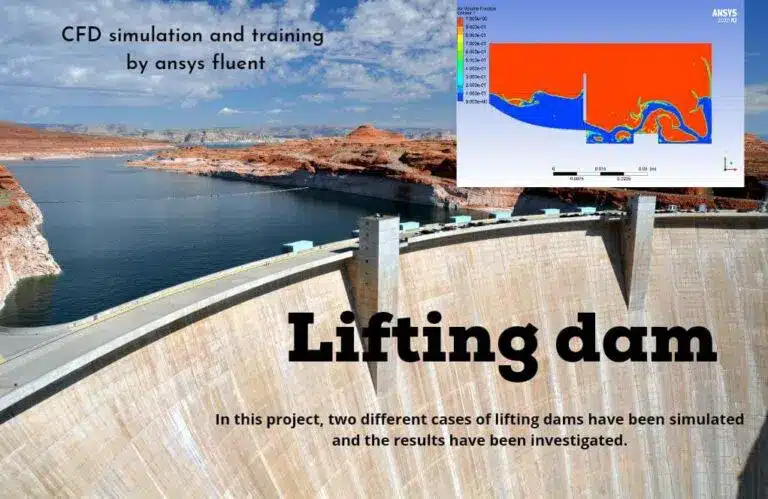
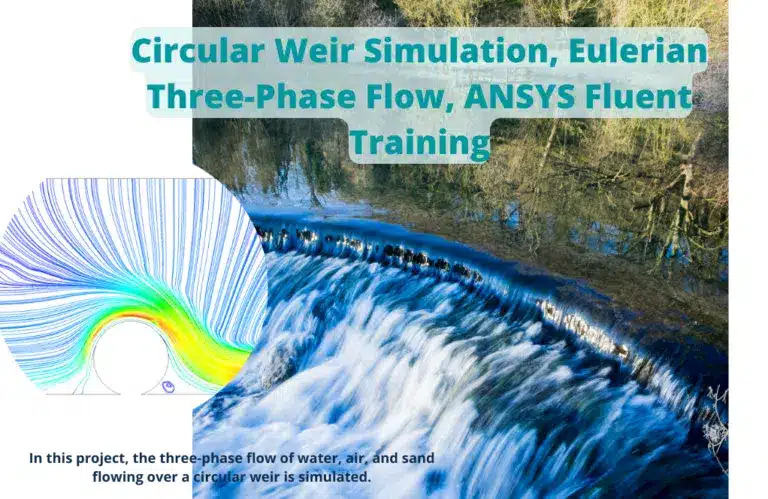
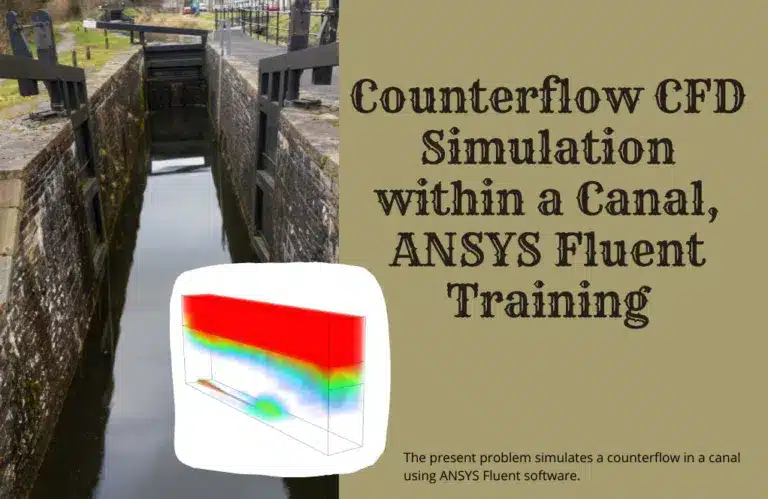
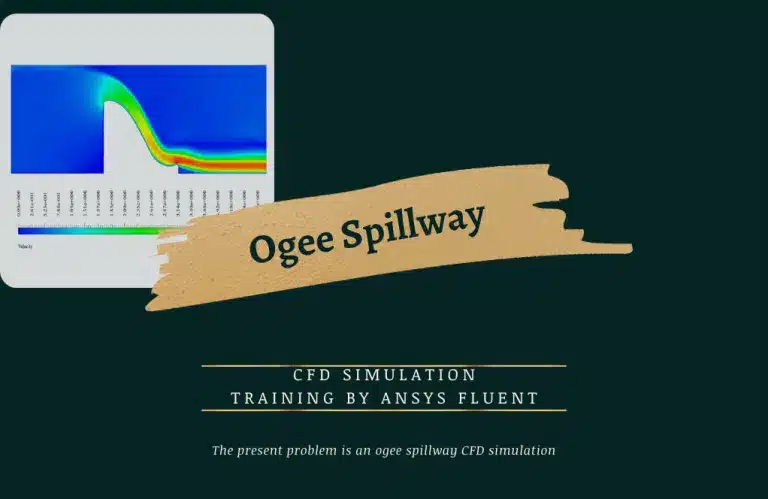
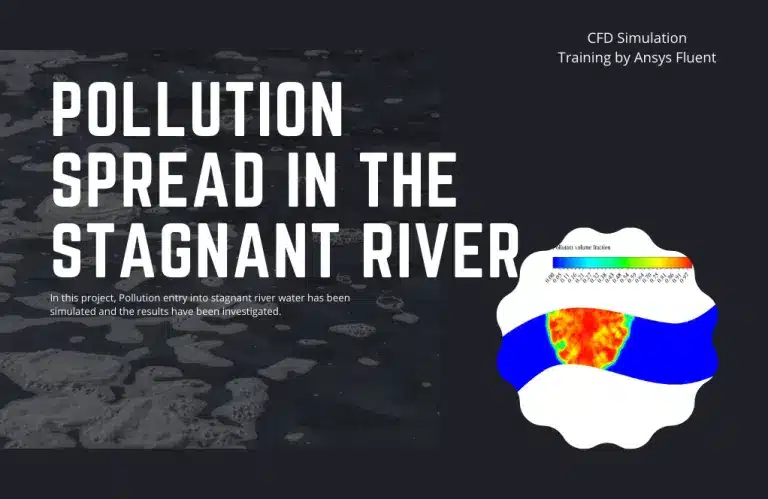

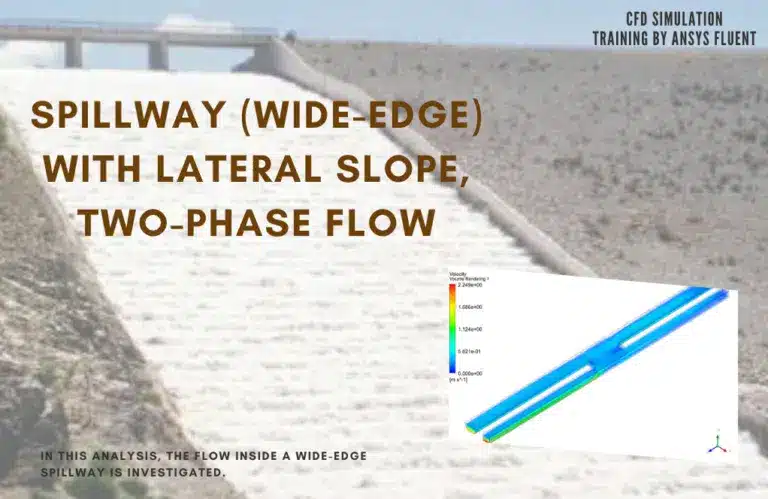
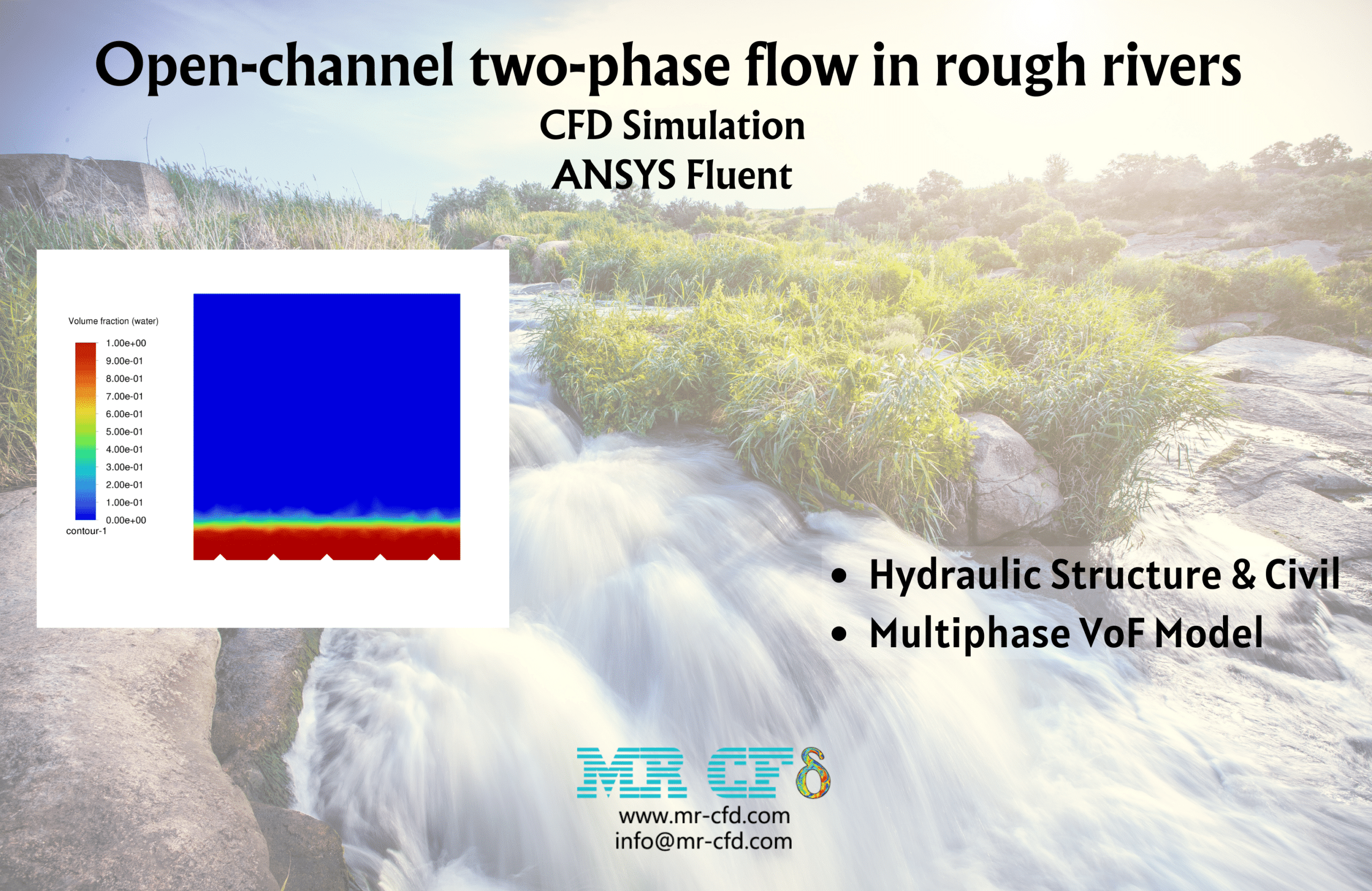
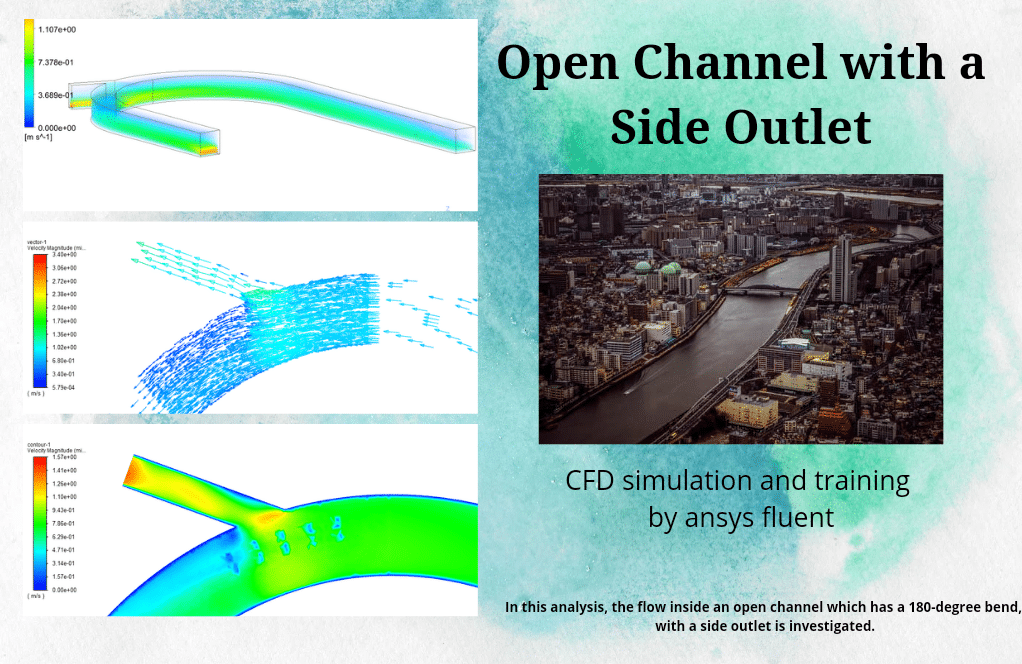
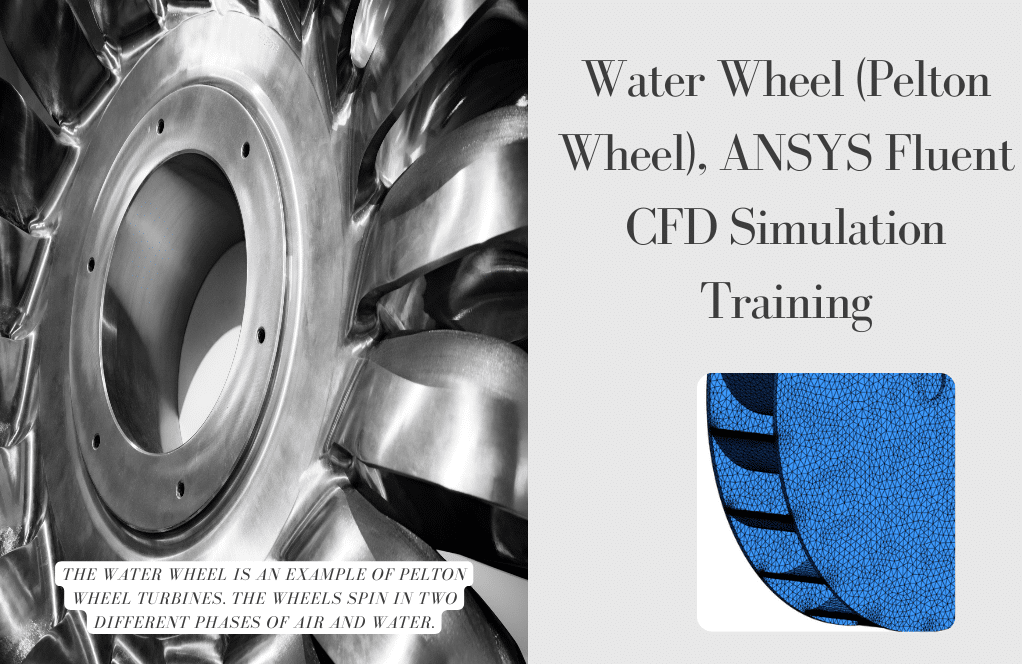
Callie Leuschke –
Does the training cover how to interpret the results of the free surface flow simulation?
MR CFD Support –
Certainly. The training includes a section on interpreting the results of your simulation. This is crucial in understanding the implications of your simulation results and how they can inform your design decisions.
Maye Cole –
How does the training handle the complexities of the Volume of Fluid (VOF) model?
MR CFD Support –
The training includes a comprehensive section on using the VOF model in ANSYS Fluent. It covers the principles of the model and how to use it effectively to simulate free surface flows.
Mr. Devante Wiza –
Does the training include any material on the effect of gravity and surface tension on free surface flows?
MR CFD Support –
Yes, it does. The training includes a section on the influence of gravity and surface tension on free surface flows. This is crucial in accurately simulating these flows.
Dr. Weldon Ebert I –
I’d like to in simulate wave breaking. Do you know if the training covers that?
MR CFD Support –
Yes, indeed. The training includes exercises that delve into the simulation of wave breaking. This is particularly important in coastal and offshore engineering applications.
Desmond Leffler –
I just completed the Free Surface Flow Training Package, and it was an incredible learning experience! The variety of scenarios covered, from spillways and weirs to rivers and open channels, really helped me grasp the complexities of free surface flow. The step-by-step instructions were clear, making it easy for me to understand how to set up and run each simulation. It was particularly enlightening to simulate environmental scenarios like river pollution and its management. Thanks, MR CFD, for such a comprehensive package!
MR CFD Support –
We’re thrilled to hear that you found the Free Surface Flow Training Package so insightful and easy to use! It’s our goal to provide detailed and clear instructions for a range of applications to ensure our users can confidently apply CFD analysis to real-world scenarios. We appreciate your positive feedback and are glad that you recognized the environmental applications like river pollution simulation. Thank you for choosing MR CFD, and we look forward to supporting your future simulations!
Terrence Wintheiser –
I’ve just completed the Free Surface Flow training package and I have to say I’m really impressed with the diversity of practical exercises included. Each problem allowed me to work with different scenarios and complexities which enhanced my understanding of free surface flow greatly. Highly recommend this for anyone looking to understand the nitty-gritties of free surface flow simulation!
MR CFD Support –
We’re thrilled to hear that you found the Free Surface Flow training package engaging and beneficial. It’s great to know that our range of exercises has supported your learning needs and helped deepen your understanding of free surface flow simulations in ANSYS Fluent. Thank you for recommending our product, and we wish you continued success in your CFD endeavors!
Keven Stamm –
Just finished the Free Surface Flow Training package—very informative with strong practical components! The range of exercises enhanced my understanding of various applications and the ANSYS Fluent software itself. Will certainly recommend to others looking to deepen their CFD knowledge in free surface flows!
MR CFD Support –
Thank you so much for your positive feedback. We’re pleased to hear that our training package has deepened your knowledge and practical understanding of free surface flow simulations in both an educational and professional context. It’s great to know that you would recommend them! Your success is our objective, and your recommendation is highly appreciated. If you need further assistance or would like to explore more advanced topics, please don’t hesitate to reach out.
Assunta Davis –
The range of applications in this training package seems quite varied. Could you please elaborate on how these different scenarios, especially Spillway & Weir, Dam, and River Pollution simulations will benefit learners in terms of skills and real-world application knowledge?
MR CFD Support –
In this package, learners gain valuable practical skills by exploring the intricate behaviors of free surface flows in various scenarios, enhancing their understanding of computational fluid dynamics in real-world engineering problems. The exercises are designed to instil practical know-how in setting up and solving complex multiphase problems from hydraulic infrastructure like spillways and dams to environmental challenges including river pollution. This versatility is foundational in advancing their CFD capabilities and preparing them for a broad spectrum of industry-relevant applications.
Angus Klocko –
This Free Surface Flow training package sounds incredibly thorough. How suitable is it for someone who has never used ANSYS Fluent before? Does the package provide foundational knowledge as well?
MR CFD Support –
The training package is designed to cater to BEGINNER, INTERMEDIATE, and ADVANCED users, which means it does include foundational knowledge suitable for someone with no prior experience with ANSYS Fluent. It starts with basic concepts and gradually moves on to more complex exercises that will help any novice get up to speed with free surface flow simulations in ANSYS Fluent.
Duane Mayer –
I’m new to CFD and am interested in the Free Surface Flow training package. How beginner-friendly is the content, and does it require any previous experience with ANSYS Fluent?
MR CFD Support –
Our Free Surface Flow training package has been meticulously developed to cater from beginners to advanced users. It starts with fundamental exercises that introduce the basic concepts, ensuring that you can progressively build your understanding of ANSYS Fluent and the principles of free surface flow simulation without any prerequisite expertise. Dedicated training material guides you through each stage, making it ideal for newcomers.
Paige Kovacek –
I just finished the Free Surface Flow training package, and I’m blown away by the detail and variety of exercises included. Learning how to model real-world scenarios like spillways, weirs, and open channels has been incredibly valuable for my studies. I also appreciated the incremental challenges, building my skills from beginner to advanced. Excited to use my heightened CFD skills on future projects!
MR CFD Support –
Thank you for your excellent feedback! We’re thrilled to hear that the Free Surface Flow training package met your expectations and helped you enhance your CFD skills. It’s our pleasure to offer comprehensive training that empowers our customers in their projects and studies. Keep up the great work, and don’t hesitate to reach out if you need any further assistance!
Napoleon Stoltenberg –
I’ve been using the Free Surface Flow Training Package extensively and it covers such a wide spectrum of scenarios so well. The combination of carefully curated exercises truly bridged the gap in my understanding of complex free surface flows,
MR CFD Support –
Thank you for the constructive feedback! We’re thrilled to know the training package was comprehensive and helpful in advancing your knowledge of free surface flow simulations. Your success in mastering these scenarios is our biggest reward.
Garrett Kessler –
This package was an encyclopedia for handling free-surface flows! The step-by-step tutorials were very effective in clarifying the concepts. Project 5’s simulation integrating water, air, and sand really demonstrated the power of multiphase flow analysis. Seeing the sand particles’ interactions with water flow visually was insightful.
MR CFD Support –
We’re delighted to hear that you found our Free Surface Flow training package so comprehensive and helpful. It’s fantastic that you could gain practical insights and a deeper understanding of multiphase flow analysis through our carefully designed practical exercises. Thank you for your positive feedback!
Osvaldo Torphy –
I’ve just completed the Free Surface Flow Training Package and I’m impressed. Every practical exercise improved my understanding systematically from beginner to advanced scenarios, making ANSYS Fluent feel more intuitive now. The guidance on how to choose the right models was invaluable, and the varied examples like spillways, weir, and open channel flows bridged theory to practical applications remarkably well.
MR CFD Support –
We are thrilled to hear that you found our Free Surface Flow Training Package educational and practical. Your understanding of ANSYS Fluent software has grown, and it’s great to see the theory applied effectively across different scenarios. We appreciate your positive feedback and are here if you need further assistance or more learning materials! Thank you for choosing to learn with MR CFD Company.
Norene Wuckert –
This Free Surface Flow CFD training package has been tremendously helpful. The practical exercises were well-structured, realistic, and varied in complexity, successfully covering different scenarios I could encounter in my work. Understanding how to set up simulations for spillways, weirs, canals, and open channels will greatly benefit my research projects. I was particularly impressed with the use of different turbulence models tailored to scenarios that provided ample learning opportunities. The wide range of applications covered makes this training kit an invaluable resource for mastering free surface flow simulations. Excellent job on this training package – it is comprehensive, instructive, and highly applicable!
MR CFD Support –
Thank you very much for your positive feedback! We are thrilled to know that you found the Free Surface Flow CFD training package to be comprehensive and valuable for your research. Our goal is to equip users with practical knowledge that can be applied to a variety of scenarios within the realm of free surface flow. We are glad that our training exercises met your expectations and helped you build a solid foundation in CFD simulation practices. Should you have any further questions or areas of special interest, we’re always here to assist. Happy simulating!
Leon Reichel I –
Just finished the ‘Free Surface Flow Training Package’. I was thoroughly impressed by how detailed the practical exercises are, covering everything from spillway behavior to river pollution modeling! The real-world applicability is incredible, giving insight into complex fluid interactions with various boundary conditions.
MR CFD Support –
We truly appreciate your positive feedback on our ‘Free Surface Flow Training Package’. It’s wonderful to hear that you found the practical exercises to be detailed and applicable to real-world scenarios. Your experience and insight motivate us to continue providing high-quality CFD training content. Thank you for choosing our educational materials!
Prof. Faustino Feil –
I have gone through all the projects and the experience was nothing short of amazing! The transition in complexities across different levels helped me to gradually develop a profound understanding of free surface flows. Kudos to the meticulous structuring of practical examples. Could you guys possibly add more real-life application problems to the lineup?
MR CFD Support –
Thank you for your kind words and feedback! We are thrilled to know that you found the training package to be beneficial for your comprehension of free surface flow simulations. We continuously aim to improve our offerings and value suggestions. Adding more real-world application problems is certainly something we can look into. Our team will take note of your request, and we will endeavor to include new examples that reflect real-life scenarios in the future updates of our training material.
Emmalee Altenwerth –
The training package really helped me grasp an understanding of free surface flow modeling. The practical exercises were instructive and engaging, providing hands-on experience that I could not have gotten from just reading theory. Thanks for a great learning tool!
MR CFD Support –
Thank you for your positive feedback! It’s fantastic to hear that the practical exercises in the Free Surface Flow Training Package were effective in enhancing your understanding of CFD modeling. We’re thrilled that our package contributed significantly to your learning experience. We always strive to provide comprehensive training tools, and your experience validates our efforts. Keep up the great work in your CFD projects, and don’t hesitate to reach out if you need any further assistance!
Ella Casper –
This package helped me immensely in understanding different practical scenarios regarding free surface flows. These exercises are diverse and progressively build on complexity, perfectly suitable for users of varying proficiency with Fluent.
MR CFD Support –
We are thrilled to hear that you’ve found the Free Surface Flow Training Package both informative and beneficial for your skill level. It’s great to know that the progressive complexity of the exercises helped you deepen your understanding of various scenarios. Thank you for sharing your positive experience!
Carolina Altenwerth II –
I absolutely loved the depth of the Free Surface Flow training package by MR CFD and how it has practical examples for different levels of expertise. I was particularly impressed with the diversity of applications covered, from spillways to river pollution. Great job MR CFD in creating a comprehensive learning resource!
MR CFD Support –
Thank you so much for your kind words and for taking the time to leave this review! At MR CFD, we strive to provide detailed and varied educational material to cater to the needs of all our users. We’re thrilled to hear that you found the practical exercises valuable and diverse. We’re always here to help with any further learning you might wish to pursue!
Roderick Smith PhD –
The Free Surface Flow training package looks very comprehensive. Are there any prerequisites or skills I should have before starting these exercises? Additionally, could you tell me if any tutorial assistance is provided as I work through the problems?
MR CFD Support –
To make the most out of the Free Surface Flow training package, a basic understanding of fluid dynamics and CFD principles is recommended. Familiarity with the ANSYS Fluent interface will be beneficial as well. Tutorial assistance is typically provided through detailed step-by-step guides or video tutorials for each exercise, ensuring you can follow along and understand the simulation setup and analysis process.
Dina Crona DVM –
Wow, with 10 practical exercises, this Free Surface Flow CFD Simulation Package seems incredibly thorough. It covers a broad range of free surface flow scenarios in various contexts, which is perfect for anyone looking to understand and simulate such complex dynamics. Each scenario adds to the learner’s toolkit, progressively building expertise in handling different free surface flow situations. What a great resource for beginners to advanced users looking to sharpen their skills in CFD related to free surface flow phenomena!
MR CFD Support –
Thank you very much for your kind words! We’re delighted to hear that you find the Free Surface Flow CFD Simulation Package comprehensive and useful for different levels of expertise in CFD simulations. Our team works hard to create detailed and practical exercises that cover a wide range of scenarios, and it’s gratifying to know that this resource is well-received. If you ever have any more feedback or need further assistance, don’t hesitate to reach out!